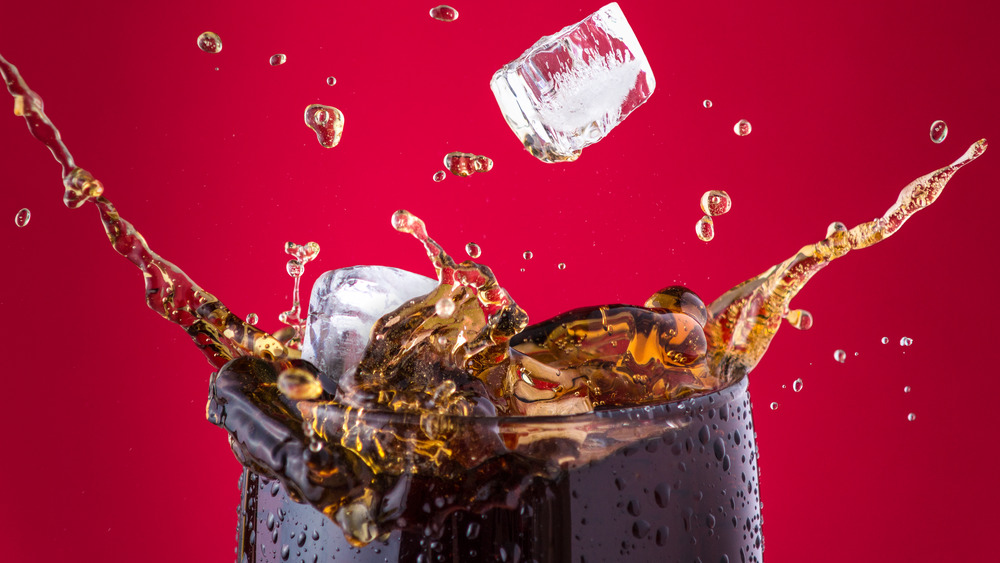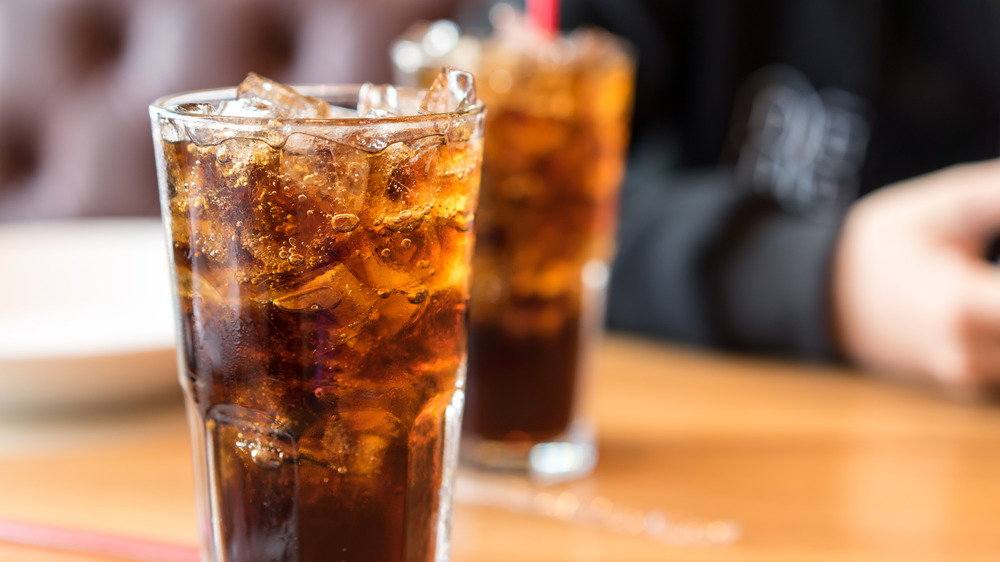Here's How Much Caffeine Is Really In Coca-Cola
Soda is a staple of American dining. The first soda water hit shelves in 1835 and has only grown in popularity since. At one point soda shops were the hubs of youth culture and even now it's unusual to see a group of people sit down without at least one soft drink on the table.
Every now and again, however, there is a push to cut back on soda — and for good reason. Soft drinks are loaded with sugar and as you may have heard, they're really not good for you. But there is another reason that you might want to watch how much soda you're drinking and it has nothing to do with sugar or calories. Instead, it has everything to do with caffeine.
Caffeine is all over the place, and that might make it seem harmless. But as the Mayo Clinic points out, caffeine has a dark side. It can cause muscle tremors, increased heart rate, headaches, and insomnia among other side effects. Of course these symptoms are usually only noticeable once an adult consumes 400 mg or more, again according to the Mayo Clinic. Of course that number is lower for pregnant people (200 mg/day) and those who have caffeine sensitivities.
How Coke Compares
400 mg of caffeine in one day sounds like a lot, especially when you consider that Coke only has between 2.5 and 3 milligrams of caffeine per ounce of soda. Diet Coke has between 3.5 and 3.75 milligrams per ounce (via Center for Science in the Public Interest). They, in turn, got their information directly from company websites. Coffee, for comparison, has 12 milligrams per ounce, while black tea has about 5 milligrams. Green tea has about 4.5 milligrams.
These all seem like small numbers. But these are milligrams per ounce. So a bottle of Coke – usually 20 oz – has about 34 milligrams of caffeine. That means if you have a 16 ounce cup of coffee with breakfast (a grande from Starbucks) and a bottle of Coke with lunch, by dinner you've consumed 226 milligrams of caffeine, over half the daily safe limit.
Soft drinks like Coke have a lower caffeine level than other drink-based sources of caffeine, but they can add up quickly. A can between breakfast and lunch, a refill or two from the fountain when you go out to eat, a can with dinner. Those milligrams add up fast and are definitely worth keeping an eye on.


